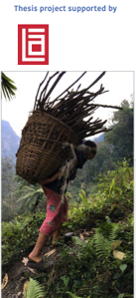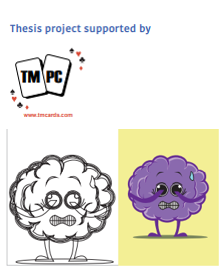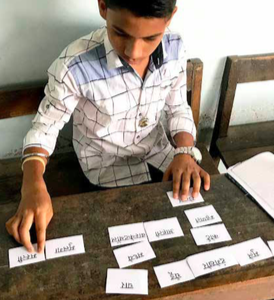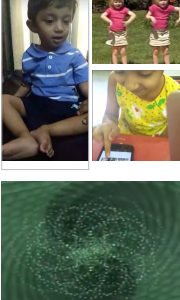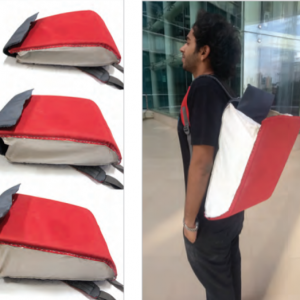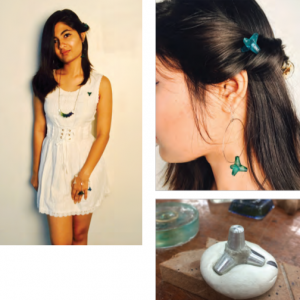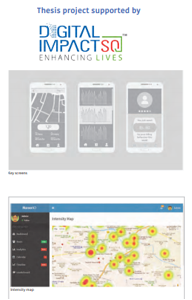‘KHOJ’ by Harshi Rambhia
Thesis Abstract:
This project explores the application of design in enhancing the way children learn. It is focused on children enrolled in government elementary schools of Sikkim. Educators across the globe agree that the education system prevalent today is obsolete. It teaches children only specific topics and skills that are considered to be of universal importance and relevance to any child, anywhere. However, what is needed in this age of technology and information, is the ability to find relevant information and understand it rather than memorize. Project Khoj is a system which would help children to be critical thinkers and become lifelong learners.
 The aim of this project is to enhance the learning process in the prime years of a child’s life and specifically, a child who belongs to a mountain region like Sikkim. The forests and rivers are integral to the lives of the Sikkimese. They have a deep understanding of their environment and ecosystem. There exists a valuable body of knowledge and practices to preserve, conserve and manage these resources. However, this indigenous knowledge is rapidly being lost due to migration and lack of recognition of its importance. The proposed intervention is a toolkit in the form of activity books that prompt children to learn with a critical thinking approach, from knowledge that is locally available. This model will eventually help tackle the rising issue of unemployment that Sikkim is witnessing. It will enable children to find new opportunities and grow sustainably with their environments. The toolkit is designed for children of age 8 to 16 years. It is divided into three levels based on age. The toolkit is designed for children 8-16 years old. It is divided into three levels (based on age). The first level is about observing, asking questions and digging deeper to make new discoveries about the children’s immediate surroundings. The second level is about expressing these discoveries in a more mature way. The third level about using this accumulated knowledge to create something that has value. First children learn to be aware of their environments by recording their daily experiences. They are also prompted to learn from the knowledge that their family members have. Next they learn to reflect on these observations and express their thoughts in a more mature way and finally, they learn to apply these skills and knowledge
The aim of this project is to enhance the learning process in the prime years of a child’s life and specifically, a child who belongs to a mountain region like Sikkim. The forests and rivers are integral to the lives of the Sikkimese. They have a deep understanding of their environment and ecosystem. There exists a valuable body of knowledge and practices to preserve, conserve and manage these resources. However, this indigenous knowledge is rapidly being lost due to migration and lack of recognition of its importance. The proposed intervention is a toolkit in the form of activity books that prompt children to learn with a critical thinking approach, from knowledge that is locally available. This model will eventually help tackle the rising issue of unemployment that Sikkim is witnessing. It will enable children to find new opportunities and grow sustainably with their environments. The toolkit is designed for children of age 8 to 16 years. It is divided into three levels based on age. The toolkit is designed for children 8-16 years old. It is divided into three levels (based on age). The first level is about observing, asking questions and digging deeper to make new discoveries about the children’s immediate surroundings. The second level is about expressing these discoveries in a more mature way. The third level about using this accumulated knowledge to create something that has value. First children learn to be aware of their environments by recording their daily experiences. They are also prompted to learn from the knowledge that their family members have. Next they learn to reflect on these observations and express their thoughts in a more mature way and finally, they learn to apply these skills and knowledge
 Credit – Harshi Rambhia – Class of 2018
Credit – Harshi Rambhia – Class of 2018


